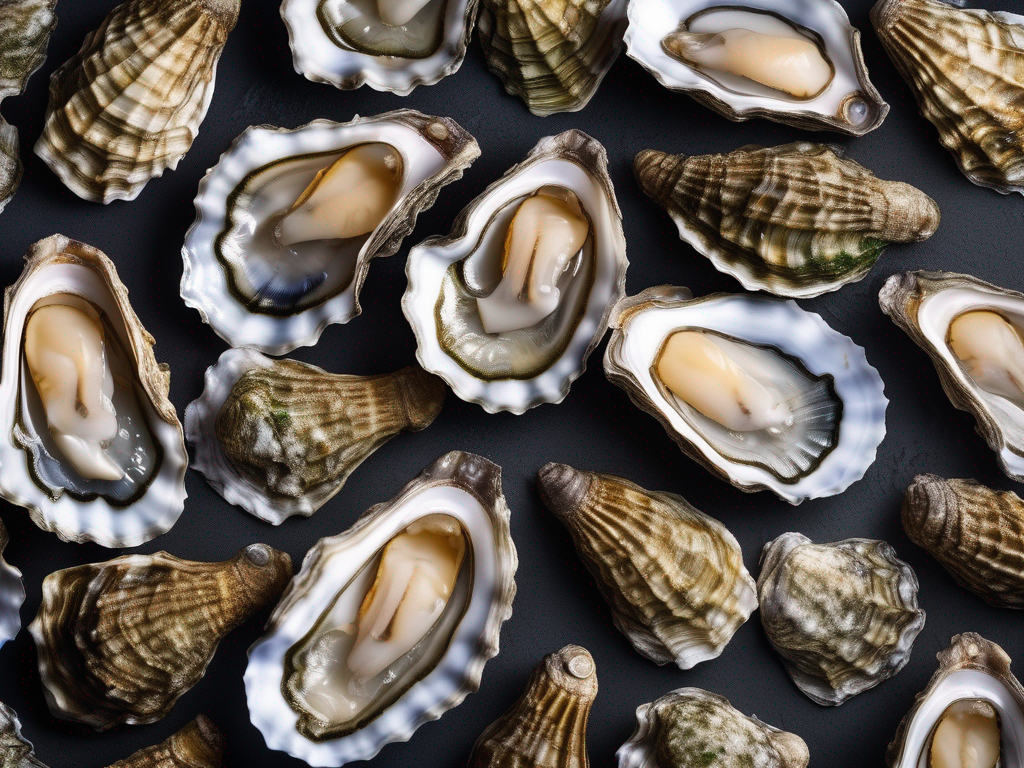
Ensuring the Quality of Oysters Purchased Commercially Frozen
Get Your Free Food Safety Cheat Sheet
30 most common foods with instant answers. Print it and stick it on your fridge—completely free!
Ensuring the Quality of Oysters Purchased Commercially Frozen
When it comes to enjoying oysters that have been commercially frozen, ensuring their quality is paramount. Oysters are delicate seafood that can spoil quickly if not handled and stored properly. In this blog post, we will discuss the best ways to check the quality of oysters purchased commercially frozen before consuming them. (Oysters purchased commercially frozen)
Understanding the Importance of Food Safety with Oysters
Oysters are known for their unique taste and nutritional benefits, but they can also pose health risks if not handled correctly. When oysters are not stored or handled properly, they can become contaminated with harmful bacteria such as Vibrio parahaemolyticus, which can lead to food poisoning. Therefore, it is crucial to follow food safety guidelines when handling and consuming oysters, especially when they have been commercially frozen.
Why Check the Quality of Oysters Purchased Commercially Frozen?
- Safety: Ensuring the quality of frozen oysters is essential to prevent foodborne illnesses.
- Freshness: Checking the quality of oysters helps guarantee that you are consuming fresh and flavorful seafood.
- Optimal Taste: High-quality oysters will provide the best taste and texture when consumed.
Tips for Checking the Quality of Oysters Purchased Commercially Frozen
When purchasing commercially frozen oysters, here are some practical tips to help you determine their quality before consuming them:
1. Examine the Packaging
- Look for intact packaging without any tears or punctures.
- Check for any signs of freezer burn, such as ice crystals or discoloration on the oysters.
- Ensure that the packaging is sealed tightly to prevent contamination.
2. Check the Sell-By Date
- Verify the sell-by date on the packaging to ensure that the oysters are within their recommended shelf life.
- Avoid purchasing oysters that are past their sell-by date, as they may have deteriorated in quality.
3. Smell Test
- Give the oysters a sniff to detect any off-putting odors. Fresh oysters should have a mild, briny scent of the sea.
- Avoid oysters that have a strong fishy or foul smell, as this could indicate spoilage.
4. Thawing Process
- Follow the recommended thawing instructions provided on the packaging.
- Thaw the oysters in the refrigerator to maintain their quality and prevent bacterial growth.
5. Visual Inspection
- Inspect the appearance of the oysters once they are thawed. They should have a plump and moist texture.
- Discard any oysters that appear shriveled, discolored, or have an unusual texture.
Safety Precautions when Handling Oysters
In addition to checking the quality of commercially frozen oysters, it is essential to follow these safety precautions when handling and consuming oysters:
- Keep oysters refrigerated: Store frozen oysters in the refrigerator at or below 40°F to prevent bacterial growth.
- Avoid cross-contamination: Use separate cutting boards and utensils for raw oysters to prevent cross-contamination with other foods.
- Cook oysters thoroughly: If consuming raw oysters, ensure they are fresh and from a reputable source to reduce the risk of foodborne illnesses.
Conclusion
Checking the quality of oysters purchased commercially frozen is crucial for ensuring food safety and enjoying a delicious seafood experience. By following the tips outlined in this blog post and practicing proper food handling techniques, you can savor the flavors of oysters with peace of mind. Remember to prioritize food safety at all times to protect yourself and your loved ones from potential health risks associated with consuming oysters.
For more information on [oysters purchased commercially frozen](/food/oysters purchased commercially frozen), visit our website. (Oysters purchased commercially frozen)
Authoritative Food Safety References
These agencies and university labs inform every tip and health precaution we publish.
USDA FoodKeeper – Cold Storage Guidelines
Official refrigerator, freezer, and pantry timelines maintained by the U.S. Department of Agriculture.
Visit USDA FoodKeeperFDA Produce Safety Rule & Grower Guidance
Field-to-fridge handling practices that prevent contamination of fruits, vegetables, and leafy greens.
Visit FDA Produce SafetyCDC Foodborne Illness Prevention Hub
Surveillance-backed guidance on pathogens, symptoms, and steps to reduce foodborne illness risk.
Visit CDC Food SafetyUC Davis Postharvest Technology Center
University research detailing optimal storage atmospheres for produce after harvest.
Visit UC Davis PostharvestPenn State Extension – Home Food Preservation & Safety
Peer-reviewed extension bulletins on safe canning, chilling, and reheating practices.
Visit Penn State ExtensionGet Your Free Food Safety Cheat Sheet
30 most common foods with instant answers. Print it and stick it on your fridge—completely free! Want more? Upgrade to the complete guide with 70+ foods.
Scan your food directly and get instant safety info using our AI-powered camera feature.